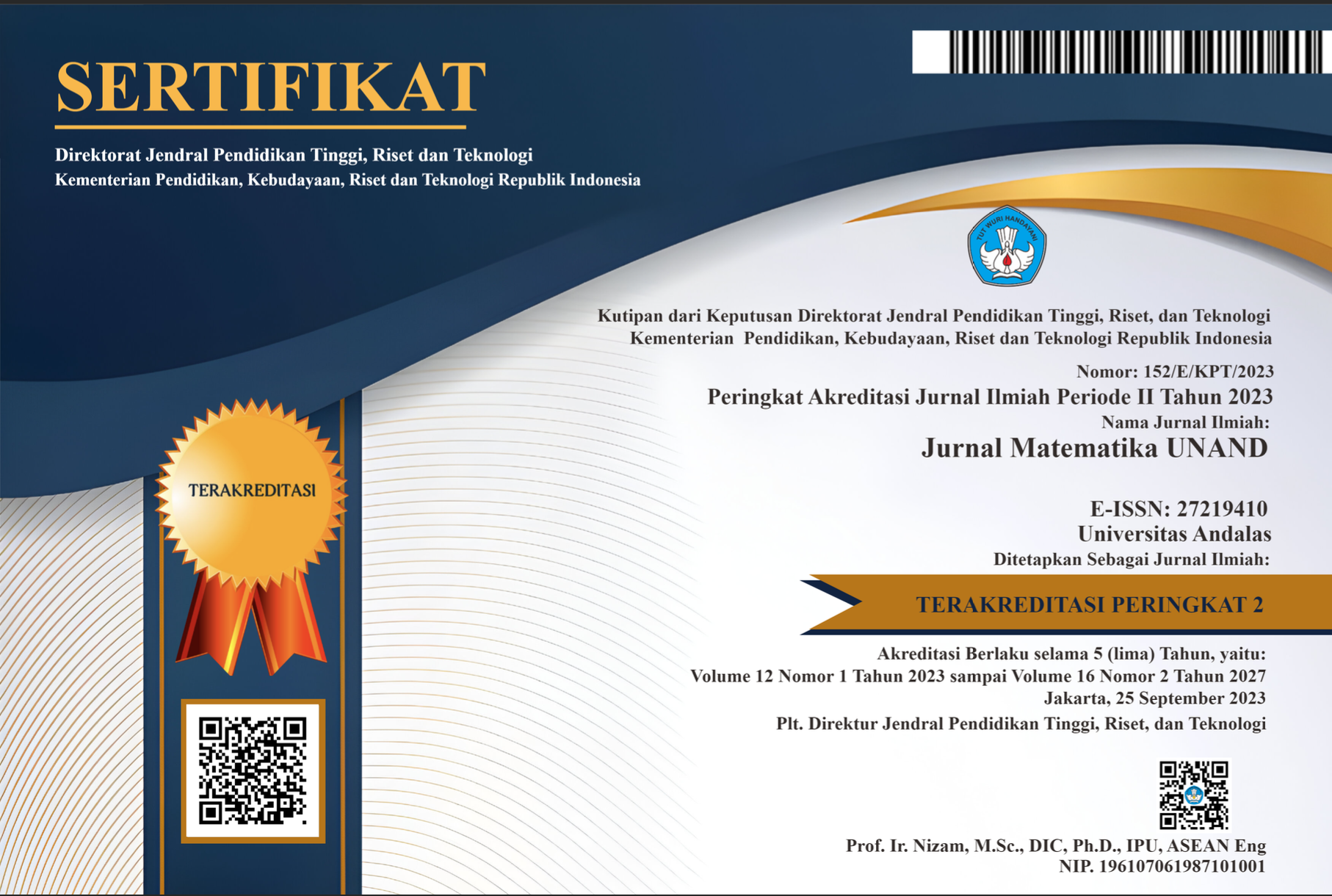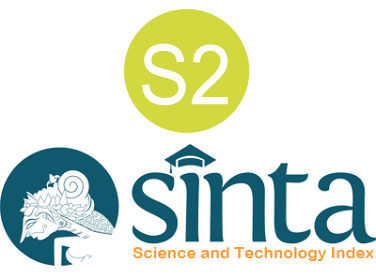AN ANALYSIS OF CLUSTER TIMES SERIES FOR THE NUMBER OF COVID-19 CASES IN WEST JAVA
Abstract
Keywords
Full Text:
PDFReferences
Knote, R., Janson, A., Söllner, M., and Leimeister, J. M., 2019, Classifying Smart Personal Assistants: An Empirical Cluster Analysis. https://doi.org/10.24251/HICSS.2019.245
Ali, A., and Sheng-Chang, C., 2020, Characterization of well logs using K-mean cluster analysis, Journal of Petroleum Exploration and Production Technology, Volume : 10(6), 2245–2256. https://doi.org/10.1007/s13202-020-00895-4
Abualigah, L. M., Khader, A. T., and Hanandeh, E. S., 2018, Hybrid clustering analysis using improved krill herd algorithm, Applied Intelligence, Volume : 48(11), 4047–4071. https://doi.org/10.1007/s10489-018-1190-6
Gao, Z., Wei, S., Wang, L., and Fan, S., 2020, Exploring the Spatial-Temporal Characteristics of Traditional Public Bicycle Use in Yancheng, China: A Perspective of Time Series Cluster of Stations, Sustainability, Volume : 12(16), 6370. https://doi.org/10.3390/su12166370
Younan, M., Houssein, E. H., Elhoseny, M., and Ali, A. E. A., 2020, Improved Models for Time Series Cluster Representation Based Dynamic Time Warping, 2020 15th International Conference on Computer Engineering and Systems (ICCES), 1–6. https://doi.org/10.1109/ICCES51560.2020.9334608
Alexander, C., Shi, L., and Akhmametyeva, S., 2018. Using Quantum Mechanics to Cluster Time Series. https://doi.org/10.48550/arXiv.1805.01711
National Disaster Management Agency (BNPB), 2022
Shaukat, M. A., Shaukat, H. R., Qadir, Z., Munawar, H. S., Kouzani, A. Z., and Mahmud, M. A. P., 2021, Cluster Analysis and Model Comparison Using Smart Meter Data, Sensors, Volume : 21(9), 3157. https://doi.org/10.3390/s21093157
Pappu, A. R., Kar, S., and Kadu, S., 2022, ACF/PACF-Based Distance Measurement Techniques for Detection of Blockages in Impulse Lines of a Pressure Measurement Circuit for Nuclear Reactors (pp. 1017–1029). https://doi.org/10.1007/978-981-16-2761-3-89
Setiawan, I., Sumertajaya, I. M., and Afendi, F. M., 2021, Predicting and forecasting of time series models using cluster analysis, Journal of Physics: Conference Series, Volume : 1763(1), 012035. https://doi.org/10.1088/1742-6596/1763/1/012035
Anastasiou, A., Hatzopoulos, P., Karagrigoriou, A., and Mavridoglou, G., 2021, Causality Distance Measures for Multivariate Time Series with Applications, Mathematics, Volume : 9(21), 2708. https://doi.org/10.3390/math9212708
Xinyi, C., 2022, Comparison between Complete and Ward’s Linkage Method in Hierarchical Clustering Analysis on Cancer Omics Dataset. 2022 10th International Conference on Bioinformatics and Computational Biology (ICBCB), 73–77. https://doi.org/10.1109/ICBCB55259.2022.9802487
Mattiev, J., and Kavsek, B., 2021, Distance based clustering of class association rules to build a compact, accurate and descriptive classifier, Computer Science and Information Systems, Volume : 18(3), 791–811. https://doi.org/10.2298/CSIS200430037M
Kumar, S. S., Ahmed, S. T., Vigneshwaran, P., Sandeep, H., and Singh, H. M., 2021, RETRACTED ARTICLE: Two phase cluster validation approach towards measuring cluster quality in unstructured and structured numerical datasets, Journal of Ambient Intelligence and Humanized Computing, Volume : 12(7), 7581–7594. https://doi.org/10.1007/s12652-020-02487-w
Dinh, D.-T., Fujinami, T., and Huynh, V.-N., 2019, Estimating the Optimal Number of Clusters in Categorical Data Clustering by Silhouette Coefficient (pp. 1–17). https://doi.org/10.1007/978-981-15-1209-4-1
Jin-Heng, G., Jia-Xiang, L., Zhen-Chang, Z., and Han-Yu, L., 2022, CDBSCAN: Density clustering based on silhouette coefficient constraints, 2022 International Conference on Computer Engineering and Artificial Intelligence (ICCEAI), 600–605. https://doi.org/10.1109/ICCEAI55464.2022.00128
Nidheesh, N., Nazeer, K. A. A., and Ameer, P. M., 2020, A Hierarchical Clustering algorithm based on Silhouette Index for cancer subtype discovery from genomic data, Neural Computing and Applications, Volume : 32(15), 11459–11476. https://doi.org/10.1007/s00521-019-04636-5
Wang, Z., and Wang, H., 2021, Global Data Distribution Weighted Synthetic Oversampling Technique for Imbalanced Learning, IEEE Access, Volume : 9, 44770–44783. https://doi.org/10.1109/ACCESS.2021.3067060
DOI: https://doi.org/10.25077/jmua.12.3.203-212.2023
Refbacks
- There are currently no refbacks.
Copyright (c) 2024 Jurnal Matematika UNAND

This work is licensed under a Creative Commons Attribution-ShareAlike 4.0 International License.

Ciptaan disebarluaskan di bawah Lisensi Creative Commons Atribusi-BerbagiSerupa 4.0 Internasional.










